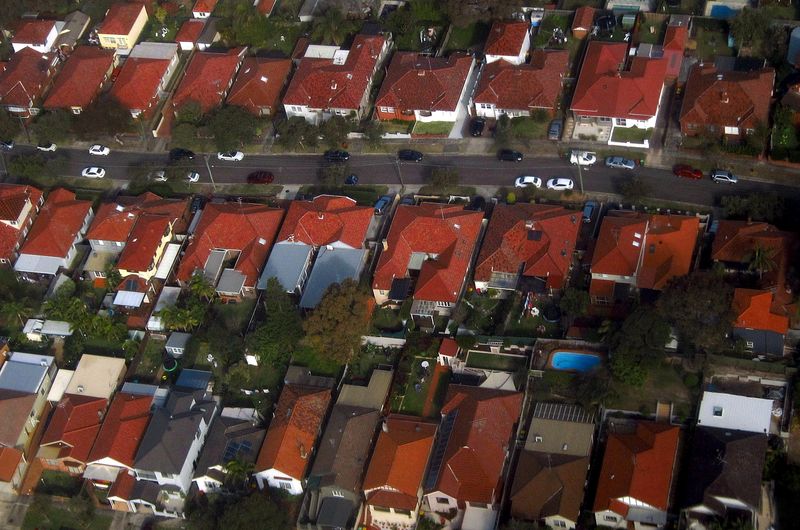(Corrects typographical error in paragraph 3)
By Wayne Cole
SYDNEY (Reuters) -Australian home prices raced to fresh heights in October, piling pressure on the country's central bank to open the door to an interest rates rise well before the current projection of 2024.
The Reserve Bank of Australia (RBA) holds its monthly policy meeting on Tuesday and speculation is rife it will soften or drop a commitment to keep yields on its April 2024 target bond at 0.1%, effectively signalling an earlier hike in cash rates.
"Yield curve control (YCC) is extraordinary policy that semi-ties the central bank’s hands, limiting forward flexibility," said Nomura economist Andrew Ticehurst. "With the pandemic crisis passing, the case for extraordinary forward guidance naturally weakens."
Highlighting those pressures were figures from property consultant CoreLogic on Monday, which showed home prices rose 1.5% in October, up a steep 21.6% on last year. That was the fastest pace since 1989, while Sydney boasted an annual gain of 25%.
Ticehurst thought the RBA would likely bring forward the guidance date to, say April 2023, and perhaps shift from a fixed target of 0.1% to a range of 0.1-0.5%.
"A range is easier to hit than a target point, and the RBA could regard this as a somewhat-elegant and partial exit," argued Ticehurst. "The more aggressive option would be to simply drop it entirely, ripping the band-aid off in one go."
Such a move would be a drastic course change given the RBA was only recently chastising market for pricing in any risk of a rate rise this side of 2024.
Investors have since gone far further, as futures imply a real chance of a hike to 0.25% by April next year and rates above 1.0% by year end.
The yield on the April 2024 bond is all the way up at 0.81% after the market suffered its worst routs in decades as the RBA declined to defend the 0.1% target.
The selloff was triggered last week by data showing annual core inflation rose a surprisingly strong 2.1% in the third quarter, taking it back into the RBA's 2-3% target band almost two years earlier than policy makers expected.
Much of the jump was due to the surging cost of housing construction, fuelled by global supply bottlenecks and a rush to build in a red-hot market.
The property boom has been a windfall for household wallets and consumer confidence, but has also stirred concerns about affordability and debt as prices run far ahead of wages.
Australia's main banking regulator responded last month by announcing a modest tightening of lending standards, with the threat of more action if the market failed to cool.
The RBA had resisted pressure to raise rates to restrain the market, arguing it would only slow the economy and cost jobs, but some pullback in stimulus now seems certain.
"We expect YCC to be removed on Tuesday and a full pivot to outcomes-based guidance in its absence," said Tapas Strickland, a director of economics at NAB.
NAB also expects the RBA to end its A$4 billion-a-week ($3.01 billion) bond buying campaign in February and now sees a first rate rise in mid 2023, rather than in 2024.
The central bank will also update its economic forecasts in a report to be released on Friday, which should see an upward shift in inflation and economic growth for next year.
While coronavirus lockdowns almost certainly caused a sharp contraction in the economy in the third quarter, world-beating rates of vaccinations have allowed most restrictions to be lifted.

Figures from ANZ on Monday showed job advertisements had already rebounded by 6.2% in October to be almost back to where they were in June, auguring well for a tighter labour market and higher wages growth.
($1 = 1.3305 Australian dollars)